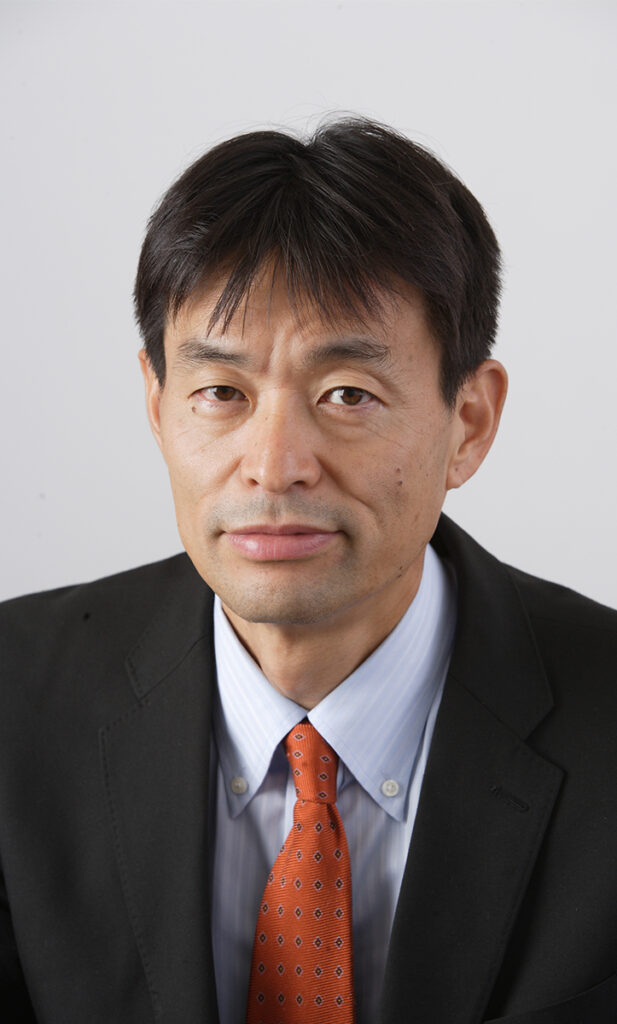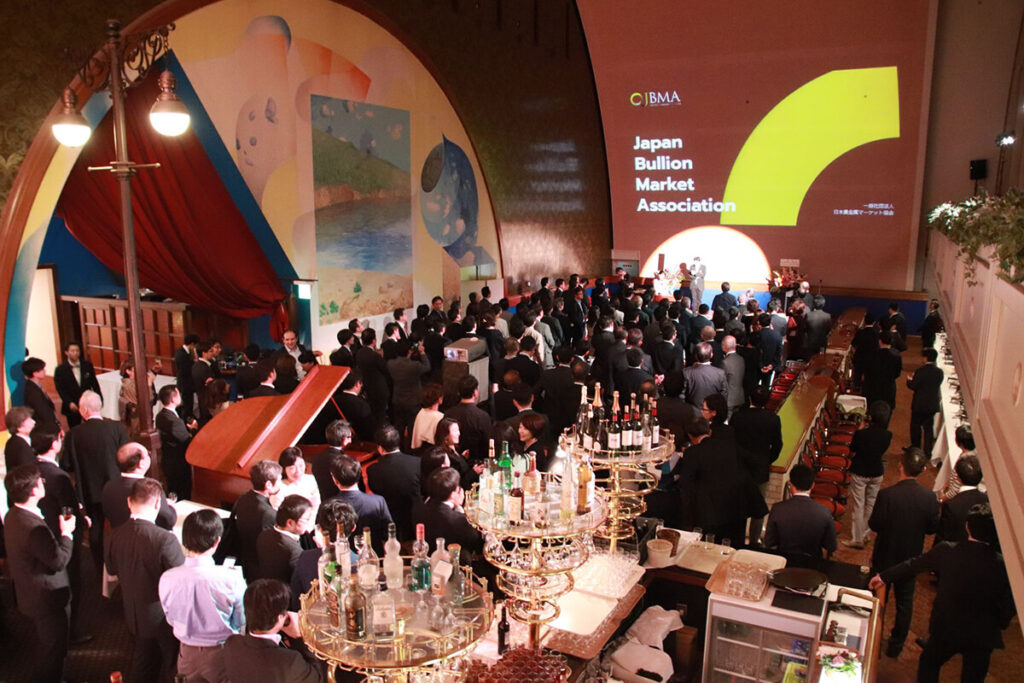Navigate
Article List
- Gold Bar Integrity Programme: Next Steps to Success
By Sakhila Mirza, Executive Board Director, and General Counsel, LBMA
- Leveraging Technology to Modernise Gold
By Brian Lan, Managing Director, GoldSilver Central
- Vietnam’s Gold Market
By Huynh Trung Khanh, Vice Chairman, Vietnam Gold Traders Association
- Strong Institutional Demand Drives Gold Demand in Q1
By Andrew Naylor, Regional CEO, APAC (ex China) and Public Policy, World Gold Council
- How the Covid-19 Crisis Turned Into an Opportunity for Korea’s Gold Market
By Kay Lee, CEO, Wolgok Jewelry Foundation
- Thailand’s Gold Market Updates
By Pawan Nawawattanasub, CEO, YLG Bullion Singapore
- Digital Gold and the Latest Updates in the Industry
By Jeffrey Premer, CEO, Vaultex & Simon Sywak, COO, Vaultex
- SBMA News
By SBMA
Article List
- Gold Bar Integrity Programme: Next Steps to Success
By Sakhila Mirza, Executive Board Director, and General Counsel, LBMA
- Leveraging Technology to Modernise Gold
By Brian Lan, Managing Director, GoldSilver Central
- Vietnam’s Gold Market
By Huynh Trung Khanh, Vice Chairman, Vietnam Gold Traders Association
- Strong Institutional Demand Drives Gold Demand in Q1
By Andrew Naylor, Regional CEO, APAC (ex China) and Public Policy, World Gold Council
- How the Covid-19 Crisis Turned Into an Opportunity for Korea’s Gold Market
By Kay Lee, CEO, Wolgok Jewelry Foundation
- Thailand’s Gold Market Updates
By Pawan Nawawattanasub, CEO, YLG Bullion Singapore
- Digital Gold and the Latest Updates in the Industry
By Jeffrey Premer, CEO, Vaultex & Simon Sywak, COO, Vaultex
- SBMA News
By SBMA
Interview: Bruce Ikemizu, Chief Director of Japan Bullion Market Association
By SBMA


Bruce Ikemizu is the chief director and precious metals specialist at Japan Bullion Market Association. He is currently using his knowledge and relationships within the sector to develop and grow the newly formed JBMA.
Crucible caught up with Bruce to hear more about his journey in the precious metal space, Japan’s precious metals market, and how the Japan Bullion Market Association, which he founded in 2019, is spearheading the growth of the sector.
Bruce, how did you get started in the business?
I joined the bullion market in 1987 after I graduated from Sophia University in Tokyo. I got my first job at Sumitomo Corporation, one of the biggest Japanese trading houses or Sogo-Shosha in Japanese, being assigned to the precious metals department. After working for Sumitomo for a little less than five years, I moved to Credit Suisse for two years, then Mitsui & Co. for 14 years, and Standard bank, which became ICBC Standard Bank later for another 14 years, until 2019.
I had been in the Japanese precious metals market, directly involved in trading and sales for the interbank or wholesale market until 2019, when I established Japan Bullion Market Association (JBMA). Currently, at JBMA, I examine the market somewhat indirectly from an advisor’s and analyst’s points of view. When I started with Sumitomo Corp, assigned to the precious metals department, I had never thought this would be my job until I was 60 years old, and it seems it will still be.
What is so unique and different about the Japanese precious metals market?
The Japanese market is unique and slightly different from most other countries because the key players are not Japanese megabanks, like MUFG, SMBC or Mizuho. Its uniqueness derives from the government structure. Many foreign countries regard gold as a quasi-currency, and banks often trade as one of the foreign exchanges, although the big difference from an FX desk is that most of them have physical trading teams to move around the globe. In Japan, gold is treated as a commodity, not a currency, as seen from the supervision of the Ministry of Economy, Trade and Industry, known as METI, rather than the Ministry of Finance (MOF), which governs banks’ activities. Thus, historically, trading houses have been the key players in gold and other precious metals markets, not banks that trade currencies and other financial instruments in Japan, which only applies to Japanese banks. This would also explain why I have worked in Credit Suisse and Standard Bank during my career in the Japanese precious metals market.
Could you give our readers who may not understand Japan’s precious metals market a bird’s-eye view of the sector?
The precious metals market in Japan has been through lots of ups and downs in the past 35 years that I have been in the precious metals space. To comprehend the changes that the Japanese bullion market went through and what it is today, allow me to share with you four broad areas that we need to understand about the industry: the interbank market, exchanges, physical market and precious metals financial investments.
Interbank Market
The global precious metals interbank market went through lots of changes last 20 years. There used to be an interbank Loco London market. In the Asian time zone, there were market makers in Sydney, Tokyo, Hong Kong, and Singapore. They all ask and quote each other through telephone, telex and subsequently through the Reuters dealing system or trade through EBS broking. But that was the long-gone past now as the world became more sensitive to those OTC trades due to the counterparty risk, and banks are more inclined to trade on futures exchanges, where trading goes through a clearing system with no counterparty risk involved. From Tokyo, the primary interbank players had been the major trading firms, but some of them pulled out of the bullion market and currently, Mitsui & Co., Mitsubishi Corp, and Sumitomo Corp are market makers, and Sojitz is the market user active in the PM trading market.

Exchanges
Any conversation regarding Exchanges in Japan would need to include Tokyo Commodity Exchange, also known as Tocom. Tocom has been in the Japanese commodity futures market since 1984, when the Tokyo Gold Exchange, which started in 1982, merged with the Tokyo Textile Exchange and Tokyo Rubber Exchange. The Japan Exchange, which has the Tokyo Stock Exchange, bought Tocom and became the group company of the biggest exchange group. Tocom transferred its precious metals contracts to Osaka Exchange (OSE), which was within the same JPX group that specialises in derivatives trading.
Tocom had one of the most active precious metals (i.e., gold, silver, platinum, and palladium) contracts across the globe next to Comex and Nymex until around 2005. The primary source of profits for the Tokyo trading firms’ precious metal traders was arbitrage trading among Tocom, Comex, Nymex and the spot loco London market. But that profit fell as Tocom’s volume dwindled year after year, mainly due to the stricter rules by the commodity law – Act on Specified Commercial Transactions. It made marketing among Future Commodity Merchants much narrower, and thus the orders from individual investors decreased drastically. Since Tocom’s liquidity relied heavily on those investors, trading volume shrank massively. OSE, a predecessor of the precious metals contracts from Tocom, is trying hard to educate investors and promote the agreements. As JPX is a member of JBMA, we are helping them market their precious metals contracts.
Wholesale and retail physical market
Third, we have the trading firms, the primary players who import and export physical metals. They represent the upstream of the market. Depending on Japan’s market demand and supply, they could either be exporters or importers. Trading firms tend to be exporters of gold, especially in recent years, because gold is mainly an investment metal. Gold in yen prices is constantly increasing as we observe them selling back the gold investors bought a long time ago. But for the other precious metals, namely silver, platinum and palladium, trading firms are often importers as they are the providers of those metals to the industrial users. Big players such as Tanaka, Tokuriki and Ishifuku, three traditional precious metals wholesale and retail traders and Nihon Material, a newcomer compared to the big three, provide services for the individual physical investors. These brands are all London good delivery accredited. In addition to those retail traders, Mitsubishi Material, a smelting company, plays an essential role in the physical retail market. They all provide GAP (gold accumulation plan) to the investors, especially Tanaka and Mitsubishi Material, two popular ones.
The other two major physical related fields are smelting and recycling of the precious metals. Only one gold mine is still operating in Japan, Sumitomo Mining’s Hishikari gold mine, which the density of gold is more than ten times higher than the global average, but the volume is small, several tonnes a year. So, Japan’s gold production is mainly from copper and other base metal concentrates and scraps. Mitsubishi Material, Sumitomo Mining, PPC, Dowa and other smelters produce their brands of gold. The other gold comes from recyclers who specialise in collecting scraps and refining precious metals from them. Asahi Pretec and Matsuda Industry are by far the two largest recyclers. In addition to those smelters, these two recyclers’ brands are also London’s good delivery accredited and are widely accepted.
Precious Metals Financial investment
Lastly, when we talk about Precious Metals Financial Investment, we look at ETFs, CFDs, futures contracts and gold-backed crypto assets.
Mitsubishi UFJ Trust and Banking offer their precious metals ETF called Fruit of Gold, which covers gold, silver, platinum, and palladium and is also the only Japanese precious metals ETF. They are growing steadily.
Internet-based security houses like Rakuten, Monex, and SBI offer CFD precious metals trading services. These are margin-based trading accounts, just like other currency margin trading.
As I previously mentioned, OSE offers precious metals futures contracts to investors. Futures are high-risk and high-return investment methods due to the margin system. They provide more miniature contracts and spot rolling-based contracts to limit the risk and make it easier for the investors to the less risk appetite.
Earlier this year, Mitsui & Co. announced a new crypto asset called Zipang Coin. As it is a brand-new gold investment vehicle, which follows gold price, it is gathering interest from the gold investment space and crypto-assets investors needing a safe haven from the relentless volatility of other crypto assets.
Why was the Japan Bullion Market Association formed, and what has it been up to lately?
In September 2019, my colleagues and I established Japan Bullion Market Association to promote investments in precious metals in Japan and help introduce Japanese and foreign entities into the Japanese precious metals market. In addition to the others, Japan Exchange (JPX, owners of OSE) and World Platinum Investment Council (WPIC) joined us as members, and we are helping them cultivate investors in Japan.
Unfortunately, Covid-19 hit the world right after our commencement, and our activity has been mainly in cyberspace. As the world returns to normal, we hope to be more active in real life.
























